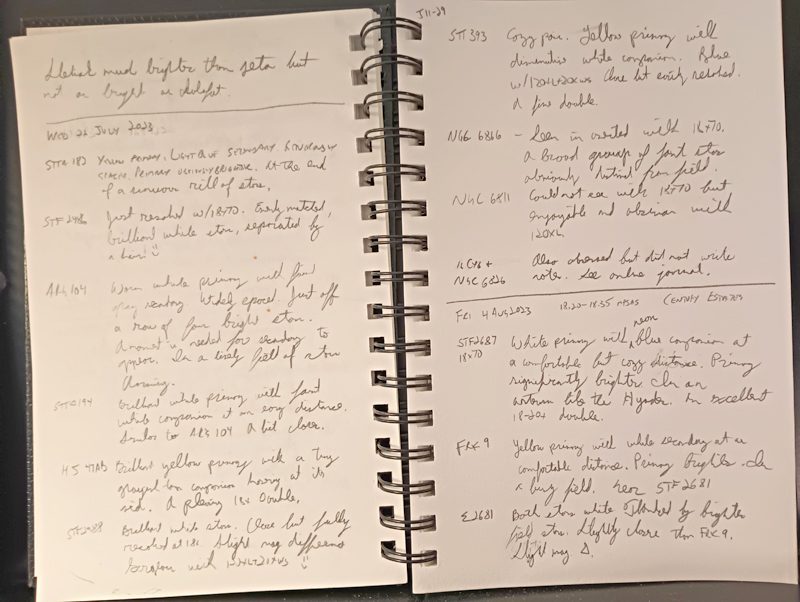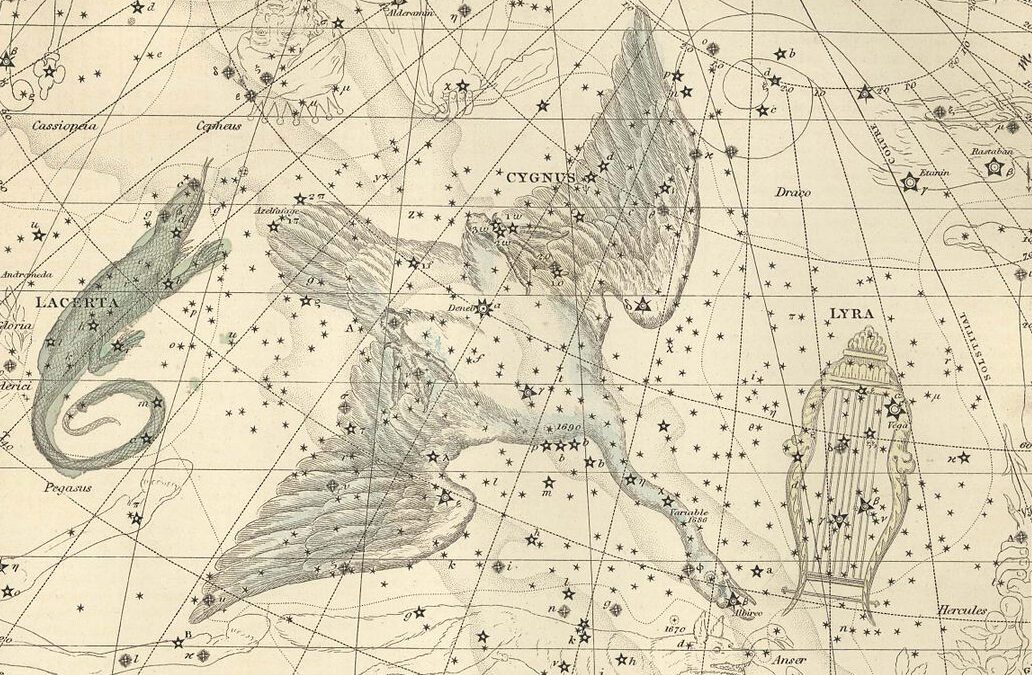Last summer (2022) a Cloudy Nights friend had a conversation with me about the relative merits of telescopes versus binoculars for observing double stars, binocular double stars by that time having become something of a passion of mine. 😉My friend pointed out that more double stars can be observed with a telescope than with a binocular, which is true, but that got me wondering how many double stars can be observed with binoculars and a quick search on StelleDoppie revealed that the answer is many thousands. And then, for amusement, I checked how many double stars could be viewed with a reasonable sized binocular (say a 20×80) in a single constellation. I chose Cygnus, which is a favorite of mine, readily viewed from my location in the late summer and early fall, and centered on the Milky Way (lots of stars). I was surprised and pleased to come up with a nice round number of 100. So the Cygni 100 observing project was born. (And so was a long-running Binoculars versus Telescopes Cloudy Nights topic. 😁)
A fellow Cloudy Nights binocular enthusiast, jrazz, promptly left me in the celestial dust zooming through the full list of 100. I plodded along beginning Cygni 100 observations on Friday 4 August 2022 and observing the 100th star Sunday 18 September 2022. Several of the stars on the list were problematic for various reasons, one because the secondary component was fainter than the magnitude listed in the US Naval Observatory’s Washington Double Star Catalog, which resulted in an email exchange with USNO astronomer Rachel Matson and the WDS data being updated. This unplanned bit of “real science” was a fun bonus of the project. More on that in another post.
Another fun surprise was Phil Harrington deciding to write about the Cygni 100 project in his Astronomy Magazine Binocular Universe column. Phil is a Cloudy Nights member and the author of Touring the Universe with Binoculars. Phil’s column was published in the September 2023 issue of the magazine. 🙂
Here is a StelleDoppie advanced search result which includes 102 doubles. It’s a revised version of the original list, tuned to be more accessible for 20×80 binoculars (primary mag. < 9.2, secondary mag < 9.5, separation between 15,200 arc-seconds). Watch out for HJ 1505 (already mentioned) because the secondary is much fainter than listed. That brings the number to 101, so I still need to tweak the list, but anyway it’s enough to have a lot of fun observing from. The StelleDoppie page supports exporting to various formats including spreadsheet and skylist (which can be imported into Sky Safari).
I am observing the full version 2 list with a Nikon 18×70 IF WF binocular (along with an assortment of other instruments) and plan to share observations in this blog, to share a PDF document of all 100 doubles with observation notes, to provide a finalized and corrected list of all Cygni 100 doubles, and who knows what all else? 😏Anyway, posts related to this project will be tagged cygni 100 so they can be easily located with the blog search.

Here is my observing journal with Cygni 100 observations from Sunday, July 26, and Friday, August 4.


Love this list!
Haven’t started on it this year yet but I intend to cheat with a 34×80
It’s not cheating, Jordan. 🙂I’m looking forward to your observing reports!
Jordan, it turns out you might need your 34×80 cheaters on one of the doubles in the revised list — STF 2743 (f1/59 Cygni). 😏With 4.76 and 9.43 magnitude components and a separation of only 21 arc-seconds, it is extremely difficult to observe with the 18×70 and probably with a 20x as well (something I will try). I was able to observe it with the 82XL+14XW eyepieces (32.5x).
I might swap STF 2743 out for ES 2699, which I noticed near ES 2701. It missed the cutoff by 0.01 magnitudes — the cutoff for secondary components used to filter the list was 9.5 magnitude, and the ES 2699 secondary is 9.51. 😁 Easily observed with 20x binoculars.
I like STF2743. Have not observed it yet but since I was able to see BU 440 AB (V1676 Cyg) and more pertinent – I could see the super dim secondary of Eta Cyg (sep 7.2 mag 3.89,12.00).
So my preference is to keep STF2743 but I get it if it’s not a good fit for most.
Thanks, Jordan. 🙂I’ve decided STF 2743 is a keeper — doable with an 18×70 with some effort and still tough but not quite as difficult with a 20×80.